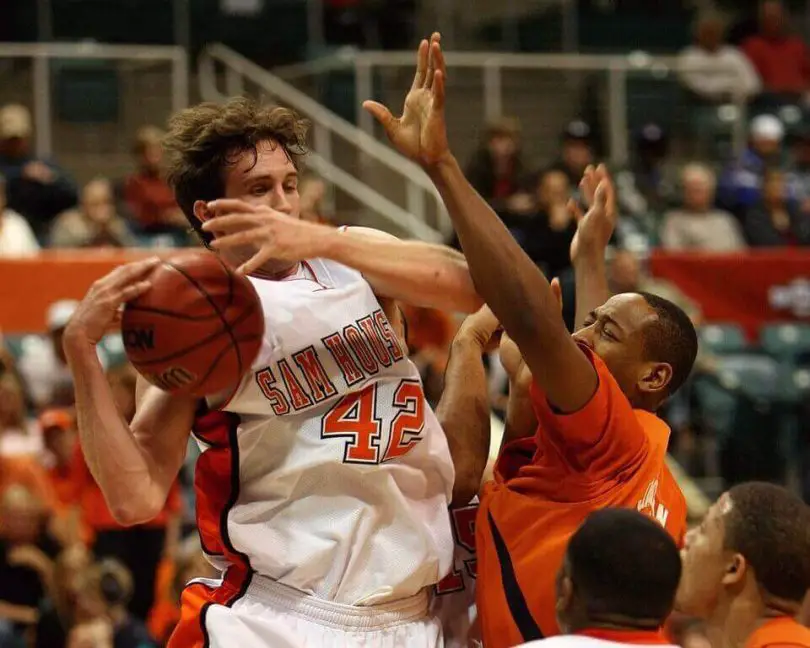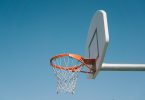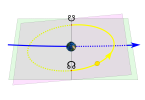If you’re a basketball fan, you may be wondering if basketball is a contact sport. While basketball is certainly a physical game, it’s not a collision sport like football or hockey. In basketball, contact between players is permitted, but it’s not meant to redirect other players in any way.
Contact in basketball can happen in a variety of ways, from incidental contact to more intentional contact during a screen or box out. However, the rules of basketball discourage excessive contact and players can be penalized for committing fouls. This is why many people consider basketball to be a limited-contact sport, rather than a full-contact sport.
Understanding Contact Sports
When we talk about contact sports, we mean sports that involve physical contact between players. The primary objective of contact sports is to defeat the opposing team by physically dominating them. Examples of contact sports include football, rugby, boxing, ice hockey, wrestling, and martial arts.
In contact sports, players are permitted to have some degree of physical contact while playing, without incurring penalties. The nature and structure of such games make it impractical for opponents to avoid physical contact. Nevertheless, the degree of contact permitted varies from sport to sport.
In some contact sports, players are allowed to use their bodies to block, tackle, or hit their opponents. In others, players are only allowed to touch their opponents with their hands or feet. The amount of physical contact allowed depends on the rules and regulations of the sport.
It’s important to note that contact sports can be dangerous and can lead to injuries or bruises. Players in contact sports need to be physically fit and must wear appropriate protective gear to minimize the risk of injury. Additionally, they must be trained to follow the rules and regulations of the sport to avoid unnecessary physical contact.
Overall, contact sports can be exciting and challenging, but they require a high level of physical fitness, skill, and discipline.
Basketball: A Brief Overview
Basketball is a widely popular sport played by millions of individuals worldwide. It was invented in 1891 by Dr. James Naismith, a Canadian physical education instructor. The game entails two teams of five players each, with the objective of shooting a ball through a 10-foot-high hoop.
Basketball is a fast-paced sport that requires a combination of physical and mental skills. Players must be agile enough to run, jump, and change direction quickly while dribbling or passing the ball. Additionally, they must shoot accurately from varying distances and angles.
One of the unique characteristics of basketball is its emphasis on teamwork. Players must work together to advance the ball up the court and create scoring opportunities. This necessitates communication, trust, and a deep comprehension of each other’s strengths and weaknesses.
While basketball is not as physical as some other sports like football or rugby, it does involve a certain level of contact. Players are allowed to make limited physical contact with each other in order to gain position or defend against an opponent. However, there are rules in place to prevent excessive or dangerous contact, and players who violate these rules can be penalized or ejected from the game.
Overall, basketball is a challenging and exciting sport that requires skill, strategy, and teamwork. Whether you are playing for fun or competing at a high level, it is a sport that can provide a great workout and a lot of enjoyment.
Physical Contact in Basketball
Basketball is a physical sport that involves contact between players. In this section, we will explore the different types of physical contact that occur in basketball.
Defensive Contact
Defensive contact is when a defensive player makes physical contact with an offensive player in an attempt to prevent them from scoring.
This can include bumping, pushing, and even fouling the offensive player. However, there are rules in place to regulate the amount of contact allowed in the game.
The most common defensive contact in basketball is the block or charge. A block occurs when a defensive player successfully stops an offensive player from making a shot by getting in their way.
A charge occurs when a defensive player positions themselves in front of an offensive player who is charging towards the basket, resulting in a foul against the offensive player.
Offensive Contact
Offensive contact is when an offensive player makes physical contact with a defensive player in an attempt to create space or get past them.
This can include pushing off, using elbows, and even charging into the defender. Again, there are rules in place to regulate the amount of contact allowed in the game.
The most common offensive contact in basketball is the screen. A screen occurs when an offensive player positions themselves in front of a defensive player to create space for a teammate to move around them. This can involve physical contact, but it is legal as long as the offensive player does not move while setting the screen.
Comparison with Other Contact Sports
When it comes to comparing basketball with other contact sports, there are some similarities and differences that need to be taken into consideration. Here are a few points to help you understand the similarities and differences between basketball and other contact sports.
Firstly, basketball is not as physically demanding as other contact sports like football or rugby. In football and rugby, players are required to wear protective gear to prevent injuries caused by physical contact. In contrast, basketball players only wear minimal protective gear like mouthguards and knee pads.
Secondly, the level of physical contact in basketball is not as high as in other contact sports. While basketball players do make contact with each other during the game, it is not as frequent or as intense as in football or rugby. In basketball, physical contact is usually incidental and not intentional.
Thirdly, the rules of basketball discourage physical contact between players. For example, players are not allowed to push, hit, or hold other players, and any contact that results in a foul is penalized. This is different from other contact sports like football and rugby, where physical contact is an integral part of the game.
Finally, basketball is considered a limited-contact sport, meaning that the level of physical contact is restricted by the rules of the game. Other limited-contact sports include baseball, volleyball, and squash. In contrast, football and rugby are considered full-contact sports, where physical contact is an essential part of the game.
Health and Safety Measures in Basketball
When playing basketball, it is important to take health and safety measures to prevent injuries and ensure a safe game. Here are some tips to help you stay safe and healthy while playing basketball:
Wear Proper Equipment
Wearing the right equipment is crucial in preventing injuries during basketball games or practice. Here are some equipment you should consider wearing:
- Basketball sneakers that fit well and provide good support
- Protective eyewear to prevent eye injuries
- Athletic supporter for males and supportive sports bra for females
- Knee pads, elbow pads, and ankle braces to protect against impact and twisting
Warm Up and Stretch
Before starting any basketball game or practice, it is important to warm up and stretch. Warming up helps increase blood flow to your muscles, making them more flexible and less prone to injury. Stretching also helps improve your range of motion and prevent muscle strains. Here are some warm-up and stretching exercises you can do:
- Jogging or running in place
- Jumping jacks
- Lunges
- Squats
- Arm circles
- Shoulder rolls
- Hamstring stretches
- Calf stretches
Use Proper Techniques
Using proper techniques when playing basketball can help prevent injuries. Here are some techniques you should keep in mind:
- Use proper footwork when dribbling and shooting
- Keep your knees bent and your back straight to avoid back injuries
- Use your legs to jump, not your back
- Land on the balls of your feet, not your heels, to avoid ankle injuries
- Avoid contact with other players whenever possible
Stay Hydrated
Staying hydrated is important during basketball games or practice. Make sure to drink plenty of water before, during, and after playing to prevent dehydration and heat exhaustion.
By following these health and safety measures, you can enjoy playing basketball while minimizing the risk of injury.
The Influence of Basketball Rules on Contact
Basketball is a physical sport that involves a lot of contact between players. However, the rules of the game dictate the level and type of contact allowed. In this section, we will discuss how the rules of basketball influence the level of contact in the game.
One of the most important rules in basketball is the concept of fouls. A foul occurs when a player makes contact with an opposing player in an illegal manner.
Examples of illegal contact include pushing, tripping, and holding. When a foul occurs, the opposing team is awarded free throws or possession of the ball.
These rules help to regulate the level of contact in the game and prevent players from engaging in dangerous or unsportsmanlike behavior.
The concept of charging is another crucial rule in basketball. It transpires when an offensive player collides with a defensive player who has established a legal guarding position.
This type of contact is legal and does not result in a foul. However, if the defensive player moves or jumps into the path of the offensive player, a blocking foul may be called.
Basketball also has rules that regulate the level of physicality allowed during rebounding and screening. Rebounding is the act of retrieving a missed shot or free throw.
Players are allowed to make contact with each other while attempting to rebound the ball, but excessive pushing or holding may result in a foul. Screening is the act of blocking an opposing player’s path to the basket.
Players are allowed to make contact with each other during screening, but moving screens or illegal contact may result in a foul.
Conclusion
In summary, basketball is a contact sport, but the level of physical contact varies based on the actions of the players on the court. While basketball is not as physically demanding as sports like football or boxing, players still make contact with each other during the game.
It is important to note that there are rules and regulations in place to ensure that players do not engage in excessive physical contact that could lead to injury. For example, players are not allowed to push, hit, or hold their opponents in a way that could cause harm.
Additionally, basketball players wear protective gear such as mouthguards and knee pads to minimize the risk of injury during physical contact.
Overall, while basketball is not considered a full-contact sport like football or rugby, it still involves a certain level of physical contact.
However, this should not discourage anyone from playing the sport, as the benefits of basketball, such as improved cardiovascular health, increased coordination, and teamwork skills, far outweigh any potential risks.







